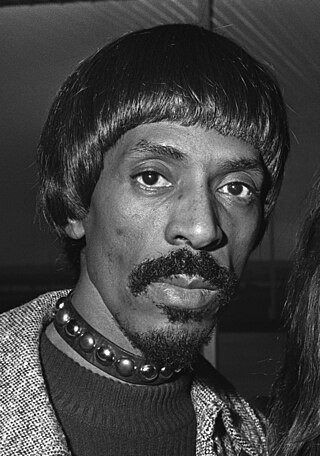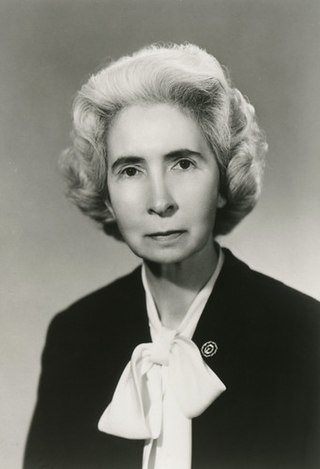| |||||
| Centuries: | |||||
|---|---|---|---|---|---|
| Decades: | |||||
| See also: | Other events of 1995 Years in North Korea Timeline of Korean history 1995 in South Korea | ||||
Events from the year 1995 in North Korea .
| |||||
| Centuries: | |||||
|---|---|---|---|---|---|
| Decades: | |||||
| See also: | Other events of 1995 Years in North Korea Timeline of Korean history 1995 in South Korea | ||||
Events from the year 1995 in North Korea .
1995~1999:Arduous March

The 1952 United States presidential election was the 42nd quadrennial presidential election. It was held on Tuesday, November 4, 1952. Republican Dwight D. Eisenhower defeated Democratic Illinois Governor Adlai Stevenson II in a landslide victory, becoming the first Republican president in 20 years. This was the first election since 1928 without an incumbent president on the ballot.

Izear Luster "Ike" Turner Jr. was an American musician, bandleader, songwriter, record producer, and talent scout. An early pioneer of 1950s rock and roll, he is best known for his work in the 1960s and 1970s with his wife Tina Turner as the leader of the Ike & Tina Turner Revue.

Tina Turner was a singer, songwriter, and actress. Known as the "Queen of Rock 'n' Roll", she rose to prominence as the lead singer of the husband-wife duo Ike & Tina Turner before launching a successful career as a solo performer.

Jeane Duane Kirkpatrick was an American diplomat and political scientist who played a major role in the foreign policy of the Ronald Reagan administration. An ardent anticommunist, she was a longtime Democrat who became a neoconservative and switched to the Republican Party in 1985. After serving as Ronald Reagan's foreign policy adviser in his 1980 presidential campaign, she became the first woman to serve as United States Ambassador to the United Nations.

Toyoake is a city located in Aichi Prefecture, Japan. As of 1 October 2019, the city had an estimated population of 69,525 in 30,185 households, and a population density of 2,994 persons per km2. The total area of the city is 23.22 square kilometres (8.97 sq mi).

Jeane Dixon was one of the best-known American psychics and astrologers of the 20th century, owing to her prediction of the assassination of President John F. Kennedy, her syndicated newspaper astrology column, some well-publicized predictions, and a best-selling biography.

Uno Pizzeria & Grill, or more informally as Uno’s, is a United States-origin franchised pizzeria restaurant chain under the parent company Uno Restaurant Holdings Corporation. Uno Pizzeria and Grill is best known for its Chicago-style deep dish pizza. Ike Sewell opened the first Pizzeria Uno in 1943.

Candace Elizabeth Newmaker was a child who was killed during a 70-minute attachment therapy session performed by four unlicensed therapists, purported to treat reactive attachment disorder. The treatment, during which Newmaker was suffocated, included a rebirthing script. She was wrapped in flannel to represent a womb and told to free herself while four adults used their hands and feet to push down on Candace's small body, making it impossible for her to move or breathe. This resulted in Candace's death.
Jeane Manson is an American model, singer, and actor, born in Cleveland, Ohio. Her first name was changed from "Jean" to "Jeane" because, as all of her career was in France after 1974, the French would have otherwise thought that she was a man, "Jean" being the French for "John".
Ike Omar Sanda Nwachukwumni ; born 1 September 1940) is a retired Nigerian Army major general and politician who served twice as Foreign Minister of Nigeria during the military regime of General Ibrahim Babangida, and as a Senator for Abia North from 1999 to 2003.
Jeane Elizabeth Lassen is a Canadian weightlifter. Lassen is from Whitehorse, Yukon and is one of few Yukon athletes to break into the world scene and is Yukon's first Summer Olympian. Weightlifting official Moira Lassen is her mother.
The Jeanes Foundation, also known as the Negro Rural School Fund or Jeanes Fund, helped support education and vocational programs for African American in rural communities from 1908 to the 1960s. It was founded by Anna T. Jeanes with help from Booker T. Washington in 1907.

Lázaro Ramón Gonzalo Naranjo [nah-RAHN-ho] was a Cuban baseball player who was a pitcher in Major League Baseball. Listed at 5 ft 11+1⁄2 in (1.82 m), 165 lb (75 kg), he batted left-handed and threw right-handed.

Allene Rosalind Jeanes was an American chemist whose pioneering work significantly impacted carbohydrate chemistry. Born in 1906 in Texas, Jeanes' notable contributions include the development of Dextran, a lifesaving blood plasma substitute used in the Korean and Vietnam wars, and Xanthan gum, a polysaccharide commonly used in the food, cosmetics, and pharmaceutical industries. Jeanes' innovations have had a lasting influence on medical treatments and everyday consumer products, highlighting her role as a key figure in applied carbohydrate science. Her achievements earned her numerous accolades, including being the first woman to receive the Distinguished Service Award from the U.S. Department of Agriculture.

Hurricane Ike was a powerful tropical cyclone that swept through portions of the Greater Antilles and Northern America in September 2008, wreaking havoc on infrastructure and agriculture, particularly in Cuba and Texas. Ike took a similar track to the 1900 Galveston hurricane. The ninth tropical storm, fifth hurricane, and third major hurricane of the 2008 Atlantic hurricane season, Ike developed from a tropical wave west of Cape Verde on September 1 and strengthened to a peak intensity as a Category 4 hurricane over the open waters of the central Atlantic on September 4 as it tracked westward. Several fluctuations in strength occurred before Ike made landfall on eastern Cuba on September 8. The hurricane weakened prior to continuing into the Gulf of Mexico, but increased its intensity by the time of its final landfall in Galveston, Texas, on September 13 before becoming an extratropical storm on September 14. The remnants of Ike continued to track across the United States and into Canada, causing considerable damage inland, before dissipating on the next day.
Isaac Cole was an American jazz pianist and composer. He was the brother of musicians Nat King Cole, Eddie Cole, and Freddy Cole, and uncle of Natalie Cole, Lionel Cole, and Carole Cole.
Ike Landvoigt is a retired German rower who won a gold and a silver medal in the eights at the world championships of 1995 and 1998, respectively. He finished in 9th and 11th place in the coxless fours at the 1996 and 2000 Olympics, respectively. His father Jörg is also a retired Olympic rower.

Arthur Lassiter was an American singer, known for his work with Ike Turner.

Namibia–North Korea relations refers to the current and historical relationship between Namibia and the Democratic People's Republic of Korea (DPRK). Neither country maintains an embassy in their respective capitals, although DPRK formerly had one in Windhoek, which closed down in 1994.

Gladys Pearl Monroe, also known as Gladys Pearl Monroe Baker Mortensen Eley, was the mother of American actress Marilyn Monroe. Born in Mexico, Baker grew up in the Los Angeles metro area. Her father died in 1909 after suffering from mental illness and alcoholism.